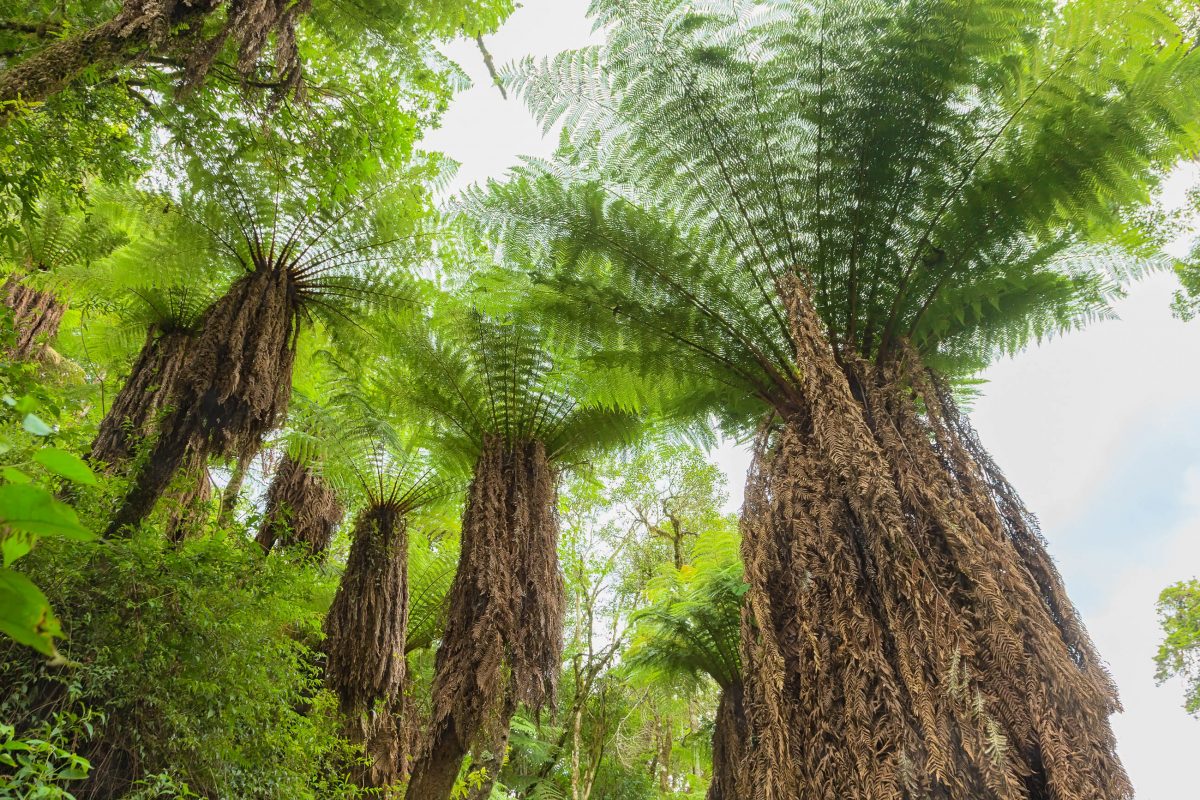Anden, Chaco und der Amazonas-Regenwald formen im Amboro Nationalpark eine fantastische Artenvielfalt, die in Öko-Dörfern und Kanus auf Wanderwegen und Naturlehrpfaden entdeckt werden kann.
Der 1984 ernannte Amboro Nationalpark liegt im Herzen des Landes und zählt unter Naturfreunden zu den absoluten Top-Sehenswürdigkeiten von Bolivien. Fernab von Städten sind die saftig grünen Wälder gesprenkelt mit kleinen Öko-Dörfern, die inmitten des unberührten Dschungels oder am Fuß spektakulärer Berge den Alltag vergessen lassen.
Inhaltsverzeichnis
Unglaubliche Artenvielfalt
Der Artenreichtum im Nationalpark Amboro ist so gewaltig, wie sonst kaum eine Region auf der Welt. Seine knapp 4.500 Quadratkilometer bieten einen geschützten Lebensraum für rund 3.700 Pflanzenarten, 130 verschiedene Säugetiere und über 100 Reptilien-Arten. Absoluter Spitzenreiter ist der Amboro-Nationalpark bei der Vogel-Vielfalt. Mit über 800 Arten weist der Park mehr Vogelarten auf, als alle Nationalparks in den USA und Kanada zusammen.
Möglich macht dies die landschaftliche Vielfalt des Nationalparks, die sich von den östlichen Ausläufern der Anden über die idyllischen Flusstäler des Chaco bis zu den Regenwäldern im Amazonasbecken erstreckt – eine weltweit einzigartige Kombination. Die Seehöhe schwankt zwischen 300 und 3.500 Metern über dem Meer.
Beste Reisezeit für den Amboro Nationalpark
Die beste Zeit für einen Besuch im Amboro Nationalpark ist die Trockenzeit von Mai bis September. In dieser Zeit regnet es am wenigsten (die geringsten Niederschläge gibt es im Juli), die Temperaturen sind angenehm kühl und die Anzahl der Moskitos hält sich in Grenzen. Aufgrund des trockeneren Wetters sollten außerdem alle Straßen passierbar sein.
Touren im Amboro Nationalpark
Über zwei Eingänge, Samaipata im Süden und Buena Vista im Norden, kann der Amboro Nationalpark betreten werden, Wanderungen auf eigene Faust sind allerdings nicht erlaubt. Die Anfahrt zum Nationalpark ist kein Problem, innerhalb seiner Grenzen sind allerdings Allradfahrzeuge erforderlich. Vor allem während der Regenzeit (November bis März) können einige Straßen nur schwer oder gar nicht passierbar sein.
Die Freizeit-Möglichkeiten im Amboro Nationalpark sind nahezu so vielfältig wie seine Flora und Fauna. Wandern, Mountainbiken, Schwimmen, Kanufahren, Rafting, Klettern und Reiten zählen zu den beliebtesten Aktivitäten – allesamt vor der herrlichen Kulisse unberührter Natur.
Ausflüge in die tropischen Regenwälder werden zum Beispiel vom landschaftlich äußerst attraktiven Mataracú oder La Chonta angeboten. Letzteres ist ein Gemeindeprojekt mit bestem touristischem Service, von lokalen Guides über Verpflegung und Unterkunft bis hin zu Reitausflügen und Klettertouren.
Sehenswürdigkeiten im Amboro Nationalpark
Die Hauptattraktion des Amboro Nationalparks ist seine landschaftliche Schönheit und sein enormer Artenreichtum. Die verschiedenen Bäume, Sträucher, Blumen und Büsche werden von bunten Schmetterlingen und anderen tropischen Insekten umschwärmt, während in den Baumwipfeln Affen und Vögel um die Wette kreischen.
Mit etwas Glück erspäht man im Dickicht einen Ameisenbär, Tapir oder ein Faultier, noch seltener vielleicht sogar einen Puma, einen Brillenbären oder ein Ozelot.
Der gesamte Nationalpark wird durch die „red line“ in den regen- und flussreichen Dschungel im Norden und die weniger dichte Vegetation im Süden getrennt.
Sehenswürdigkeiten im Süden des Amboro Nationalparks

Die Region um La Yunga ist die Heimat der mystischen Nebelwälder, mit ihrer ganz eigenen Vegetation, die unter anderem aus den eindrucksvollen Baumfarnen besteht. Absolute Ruhe herrscht in der kleinen Öko-Herberge Volcanes, die nur zu Fuß über einen 7km langen Marsch zu erreichen ist. Die Touren von Volcanes aus führen tief in den Dschungel und bringen Wanderer fernab jeglicher Zivilisation.
Im Jardin de las Delicias, dem „Garten der Köstlichkeiten“ führt ein gut markierter Wanderweg zu drei herrlichen Wasserfällen, die zwischen 80 und 100 Meter hoch sind. In der nahe gelegenen Ortschaft El Torno stehen Hütten und Zelte für Übernachtungen zu Verfügung.
Sehenswürdigkeiten im Norden des Amboro Nationalparks
An den beiden 50m hohen Wasserfällen und den kristallklaren Wasserbecken der Laguna Verde leben zahlreiche Kaimane und am Naturlehrpfad „Las Palmeras“ bei La Chonta werden die Baumriesen und Heilpflanzen des Dschungels vorgestellt.
Mit Kanu oder Kajak können die spektakulären „Cajones del Ichilo“, hoch aufragende Felsen am Ufer des Flusses Ichilo besucht werden. Nicht weit davon entfernt sind auch die Cavernas de los Guácharos sehenswert. Diese Höhlen werden von einer großen Anzahl Fettschwalmen (Guácharos) bewohnt, die am Abend in Scharen zur Futtersuche ausfliegen.
Auch der Dschungel um das Öko-Dorf Villa Amboró hält mit natürlichen Schwimmbecken, einem 50m hohem Wasserfall, dem majestätischen Gipfel des Cerro Amboró und dem Mirador del Amboró mit spektakulärer Aussicht über das Flusstal des Rio Surutú einige unvergessliche Sehenswürdigkeiten bereit.





